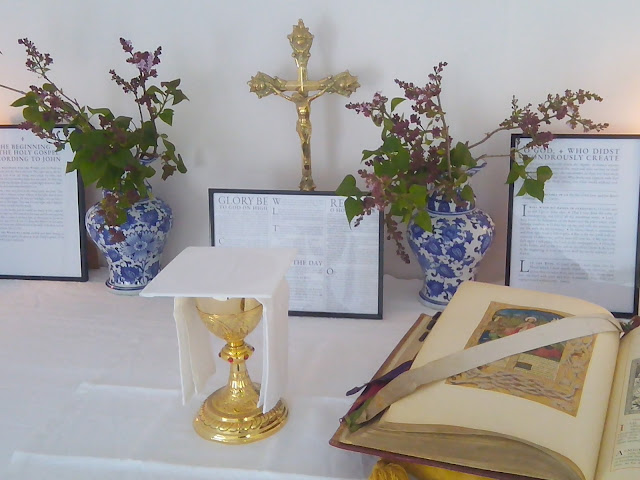Pontigny I
The largest Cisterican abbey church in the world is that of Pontigny (Yonne), in north Burgundy. It was the Englishman St Stephen Harding who sent Hugues de Mâcon from Cîteaux to found the monastery, second of the four "first daughters of Cîteaux," in 1114.
The English connection was kept up through the centuries. As Burgundy was on the route for ecclesiastical travellers between England and Rome, many English clerics stopped off at Pontigny Abbey, sometimes for extended periods of time. St Thomas Becket, patron of the English clergy, spent part of his continental exile there; and St Edmund of Abingdon, Archbishop of Canterbury, who had studied years before at both Oxford and Paris, died nearby in 1240. He had been staying at the abbey, then was taken sick and died just after continuing on his planned journey to Rome. His body was taken back to the abbey, and what is left of it is now in the reliquary behind the high altar.

There were soon reports of miracles at the archbishop's tomb, and King Henry III of England paid for four candles to be kept burning before the shrine, before coming to Pontigny on pilgrimage in person in 1254, when he gave significant gifts to the abbey. The English royal connection had already existed since at least 1131, when Henry I exempted the monks of Pontigny from paying taxes when they or their goods crossed his dominions, and similar privileges were renewed by subsequent English kings up to Richard II at the end of the 14th century.
The church and adjoining surviving buildings were used in the latter part of the 20th century by the Mission de France, a sort of clerical congregation of worker priests (or self-supporting clergy, as they would be called in the C of E). More recently, there has been a vigorous controversy because the local commune, unable to afford the upkeep of the buildings, decided to sell them off. A traditionalist RC community, the Priestly Fraternity of St Peter (FSSP), raised the money to buy them and bring them back into use as a seminary, at least something not that far removed from their original purpose, but the (socialist-run) regional council decided instead to sell the abbey to a property developer (for a lower financial offer) to turn its surviving monastic buildings and gardens into a luxury hotel. The development is now scheduled to take years of building works.




.jpg)

.png)
